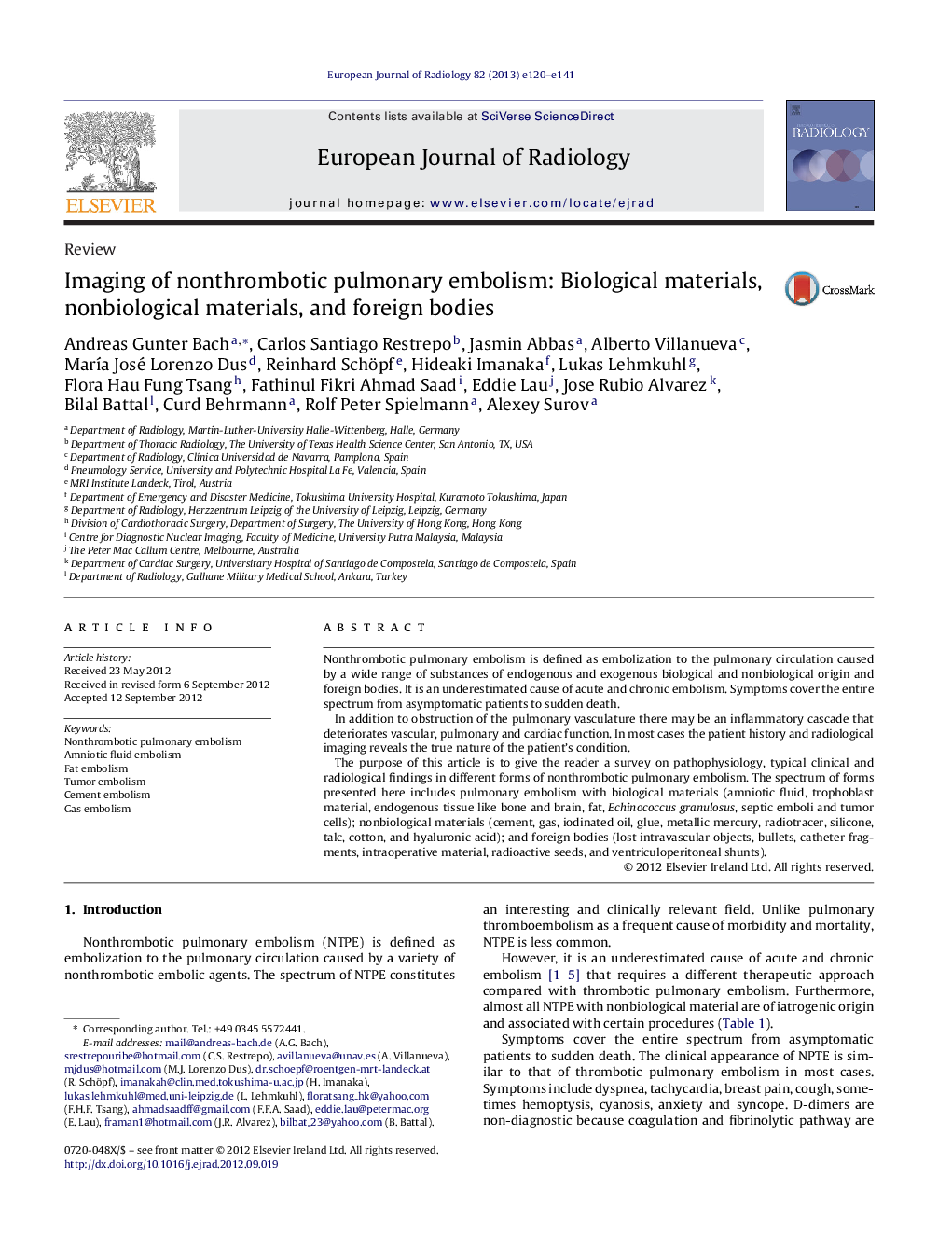| Article ID | Journal | Published Year | Pages | File Type |
|---|---|---|---|---|
| 4226027 | European Journal of Radiology | 2013 | 22 Pages |
Nonthrombotic pulmonary embolism is defined as embolization to the pulmonary circulation caused by a wide range of substances of endogenous and exogenous biological and nonbiological origin and foreign bodies. It is an underestimated cause of acute and chronic embolism. Symptoms cover the entire spectrum from asymptomatic patients to sudden death.In addition to obstruction of the pulmonary vasculature there may be an inflammatory cascade that deteriorates vascular, pulmonary and cardiac function. In most cases the patient history and radiological imaging reveals the true nature of the patient's condition.The purpose of this article is to give the reader a survey on pathophysiology, typical clinical and radiological findings in different forms of nonthrombotic pulmonary embolism. The spectrum of forms presented here includes pulmonary embolism with biological materials (amniotic fluid, trophoblast material, endogenous tissue like bone and brain, fat, Echinococcus granulosus, septic emboli and tumor cells); nonbiological materials (cement, gas, iodinated oil, glue, metallic mercury, radiotracer, silicone, talc, cotton, and hyaluronic acid); and foreign bodies (lost intravascular objects, bullets, catheter fragments, intraoperative material, radioactive seeds, and ventriculoperitoneal shunts).
